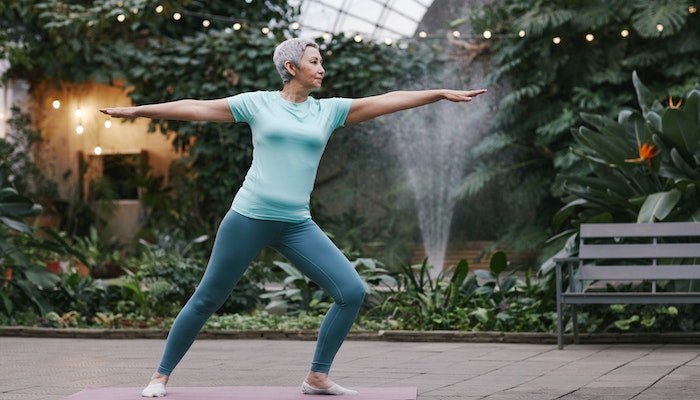Prescription medication provides essential treatment options for many conditions. What often surprises people is that less complicated, more natural or holistic solutions can either complement a particular continuum of care or help reduce total reliance on medication. This is especially true for people who suffer from chronic pain.
What Does Holistic Mean?
Merriam-Webster’s official definition is “relating to or concerned with wholes or with complete systems rather than with the analysis of, treatment of, or dissection into parts.” More simply, a holistic care approach takes into account the integration of:
- Emotional, mental, physical, and spiritual wellness
- Environmental and societal factors that influence that wellness
- Lifestyle habits and self-care techniques that reinforce wellness choices
For example, if a person with fibromyalgia struggles with chronic pain, they might turn to alcohol or other substances to find relief, even if they’re already on a prescription or over-the-counter medication. When they don’t feel understood by their physician about symptom severity, and if the pain becomes all-consuming at times, they may become more depressed and anxious. Pain, substance use, and mood disorders can then interfere with proper sleep. A continued lack of sleep intensifies pain and reduces the energy to exercise or follow other routines and rituals that might provide relief. It’s a vicious cycle with seemingly no end in sight.
Holistic therapies often do more than alleviate certain symptoms: they provide an individual with a wealth of choices so they have more control over their health journey.
Supportive Evidence for Holistic Alternatives
Assessing an individual’s level of pain is challenging to quantify because each one of us has a different pain threshold—the point when you first notice pain—and pain tolerance—the maximum feeling of pain you can stand. This is one of the primary reasons why the prescription opioid epidemic became so dire: physicians didn’t have a uniform approach for evaluating pain.
Fortunately, advances within the scientific community have propelled broader thinking of holistic alternative therapies for pain management. As we develop a greater understanding of the body, mind, and spirit connection, it’s easier to use diverse methods to find balance. Here are a few examples:
- Neurology reports results from a 2022 study indicating acupuncture was effective in reducing chronic tension-type headache episodes per month. Additionally, in 2020, the success of acupuncture as a viable method for treating chronic low back pain prompted the Centers for Medicare & Medicaid Services to finally cover the treatment.
- The Cleveland Clinic points to the multiple benefits of myofascial release therapy. Myofascial tissue “is densely woven throughout your muscles, bones, nerves, arteries, veins and organs. Each part of your body is connected to it in some way. That’s why if there’s a snag in the tissue in one part of your body, it can cause pain in another part of your body.” Some studies indicate that when combined with other treatments such as physical therapy, myofascial release “significantly improved pain and physical function” for people with chronic low back pain.
- According to the University of Minnesota, “because we’re genetically programmed to find trees, plants, water, and other natural elements engrossing, we’re absorbed by nature scenes and distracted from our pain and discomfort.” Studies involving the natural world’s effect on the practice of “pain catastrophizing”—which scientists note is “among the strongest predictors of pain intensity”—suggest that “the presence of nearby nature buffers the relation between pain-related catastrophizing and pain intensity among commuting-dwelling urban residents who suffer from chronic pain.”
For people maintaining a healthful sobriety, it’s essential to use holistic recovery options to avoid reaching a pain threshold that starts a domino effect. In addition to the methods mentioned above, here are some other potential options.
Alternatives for Pain Management
Every suggestion has an important disclaimer: your mileage may vary. Pain is subjective, so different modalities might have a greater impact on one person and little to no outcome for another.
Minimize Stress
Pain is exacerbated by stress, so the more you incorporate daily methods to reduce its impact, the better. Look into the benefits of:
- Practicing mindfulness
- Regular exercise and a whole-foods diet, including the potential of noted inflammation-reducing supplements such as capsaicin and turmeric
- Calming breathing techniques
- A more committed focus to sleep hygiene
- Music therapy and art therapy classes
- Communing with sober social network and 12-step groups that support your recovery
- Progressive muscle relaxation, yoga, tai chi, and other gentle movement
Other Potential Healing Methods
If you’ve not tried acupuncture, myofascial release therapy, or other types of holistic applications to reduce pain symptoms, now might be the time. Consult your healthcare provider first and do your research—most practitioners of the following are required to be certified and licensed in their modality:
- Various forms of massage
- Biofeedback
- Cryotherapy
- Brainspotting
- Water therapy
- Eye movement desensitization and reprocessing, or EMDR
Additional Medical Applications
Depending on your condition, there are other types of pain mitigation beyond medication. Ask your care provider about whether these techniques might help you:
- Beta blockers
- Hypnotic analgesia
- Nerve blocks for isolated pain
- Transcutaneous electrical nerve stimulation (TENS)
Find Whole-Person Care at Willingway
When choosing an inpatient addiction recovery center in Georgia, it’s essential to place a level of importance on the holistic care options included within the scope of treatment. This ensures you have real-life applications outside the rehab walls to not only reinforce daily effective pain management but also support whole-person wellness. Ask a member of our admissions team how Willingway’s multifaceted medical and holistic treatment solutions can help.

